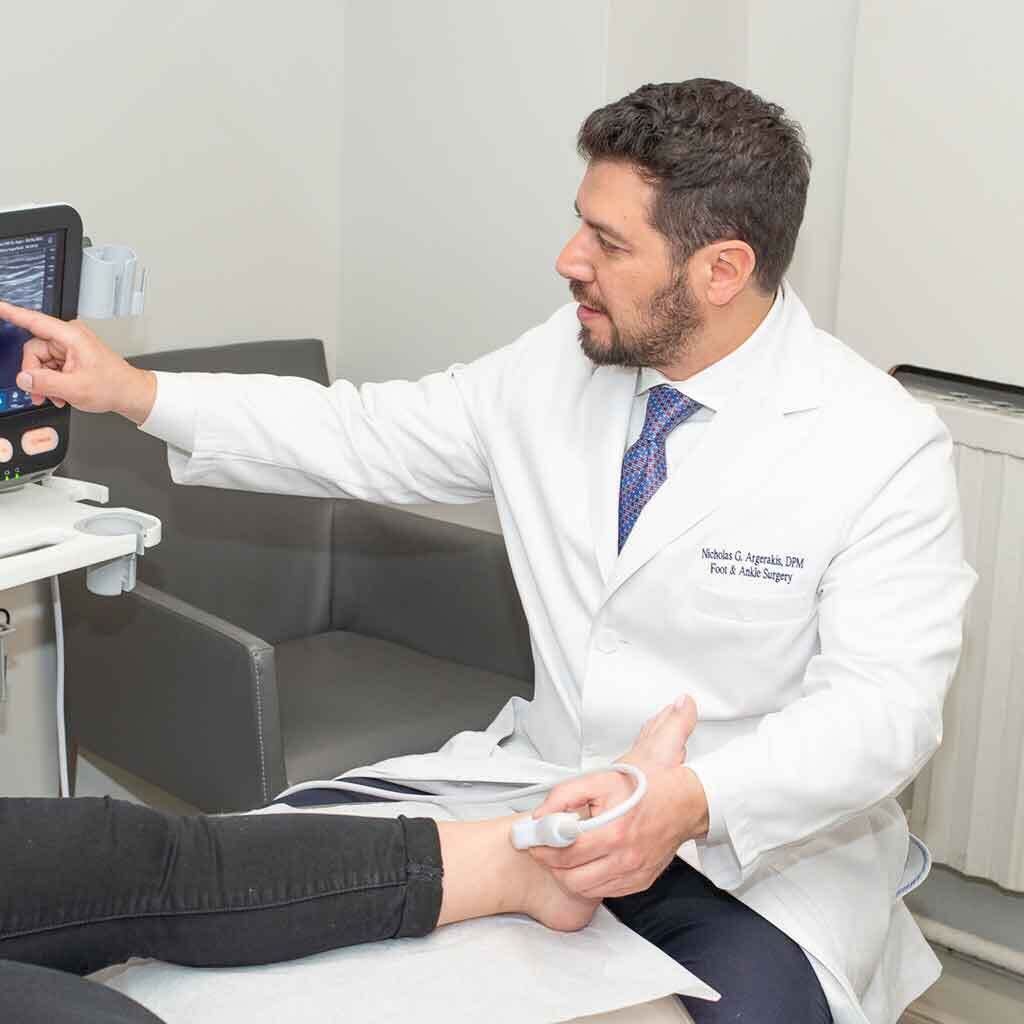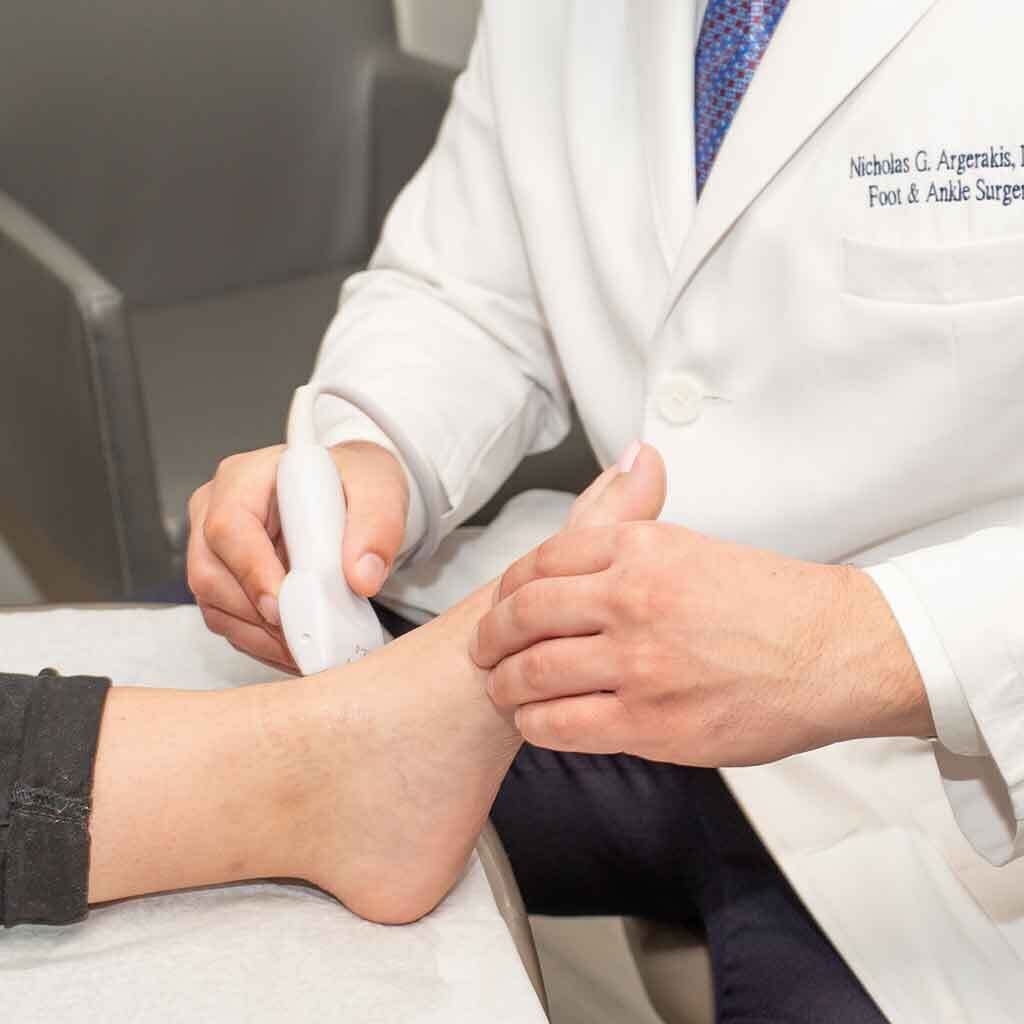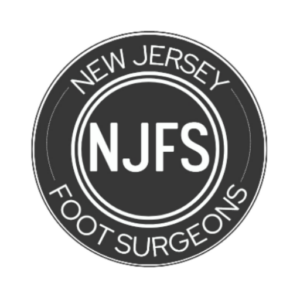Flat feet can limit mobility and cause discomfort, affecting daily activities and enjoyment. Don’t let it stop you from living your life—seek professional help and regain your freedom.
Dr. Nick Argerakis, DPM, a board-certified foot and ankle surgeon, uses advanced techniques to create a personalized treatment plan tailored to your needs, ensuring quick and effective care. Every case is unique, and he focuses on providing the most efficient solution for your health goals.
Don’t let flat feet hold you back. Take control and reclaim your life. Call us at (732)-320-9173 to schedule your appointment and start living pain-free.
Key Takeaways:
- Flat feet can lead to discomfort, pain, and mobility challenges that affect daily life
- Surgical procedures aim to restore foot structure, improve posture, and alleviate pain effectively
- Common causes of flat feet include genetics, muscle imbalance, injuries, arthritis, and obesity
- Key symptoms to monitor are arch flattening, foot pain, swelling, fatigue, and instability
- Our clinic utilizes advanced diagnostics and innovative surgical methods for precise treatment
- Personalized care plans are designed to meet the unique needs of every patient
- Post-surgery recovery is supported through rehabilitation and multidisciplinary collaboration
- Board-certified podiatrists and experienced surgeons provide expert, patient-centered care
Call (732)-320-9173 to take the first step toward a pain-free, active life.
Understanding Flat Foot Surgery
Flat foot surgery is a specialized procedure designed to correct structural deformities, restore proper foot function, and relieve symptoms associated with flat feet. Flat feet, also known as pes planus, occur when the arch of the foot collapses, leading to foot instability, pain, and mobility issues. While some individuals are born with flat feet, others develop the condition over time due to various factors. This article provides a comprehensive overview of flat foot surgery, its causes, treatment options, and recovery process.
What Are Flat Feet?
Flat feet refer to a condition where the foot’s arch fails to develop or collapses over time. This condition can affect both children and adults. While some infants are naturally born with flat feet and develop an arch as they grow, others may retain the condition into adulthood. Additionally, some adults experience fallen arches due to injuries, aging, or underlying medical conditions.

What Causes Flat Feet?
Several factors contribute to flat foot deformity, including:
- Genetics: Some individuals are genetically predisposed to having flat feet due to inherited foot structure.
- Muscle Weakness or Imbalance: Weak or overstretched tendons, especially the posterior tibial tendon, can cause the arch to collapse.
- Injury or Trauma: Fractures, sprains, or ligament damage can lead to misalignment and cause flat feet.
- Arthritis: Rheumatoid arthritis and other degenerative joint diseases can weaken the foot structure, leading to arch collapse.
- Obesity: Excess weight places additional pressure on the foot, worsening structural abnormalities.
- Adult-Acquired Flat Foot (Posterior Tibial Tendon Dysfunction – PTTD): A common condition where the posterior tibial tendon becomes inflamed or torn, leading to progressive arch collapse in adults.
What Are the Symptoms of Flat Feet?
The symptoms of flat feet can vary in severity and may include:
- Arch Flattening: The foot visibly lacks an arch when standing.
- Foot Pain: Commonly felt in the arch, heel, or ankle, especially after prolonged activity.
- Swelling: Inflammation along the inner side of the foot.
- Foot Fatigue: Aching or tired feet, particularly after standing or walking for long periods.
- Instability and Poor Balance: A collapsed arch can make it harder to maintain balance, increasing the risk of falls.
- Knee, Hip, and Lower Back Pain: Flat feet can lead to misalignment in the legs, causing pain in other parts of the body.

Non-Surgical Treatment Options for Flat Feet
Before jumping to surgery, doctors usually recommend starting with non-surgical treatments to manage flat feet and relieve discomfort. Orthotic inserts can be a game changer—they provide extra arch support and help distribute weight evenly, reducing strain on the foot. Physical therapy is another effective approach, focusing on strengthening and stretching exercises to improve mobility and function.
Wearing supportive footwear with good arch support can make a big difference in reducing pain and preventing the condition from getting worse. Some people also benefit from bracing or taping, which helps stabilize the foot and ease the strain on overworked muscles and tendons. If inflammation and pain are a problem, anti-inflammatory medications can help reduce swelling and make walking more comfortable.
Since carrying extra weight puts more stress on the feet, weight management is often recommended to help ease the burden and improve overall foot health. If these treatments don’t bring enough relief and symptoms continue to worsen, surgery may become a necessary option.
Common Types of Flat Foot Surgery
When non-surgical treatments aren’t enough, different surgical options can help correct flat feet and restore function. One of the more common procedures is medializing calcaneal osteotomy, where the heel bone is cut and repositioned to bring the foot into better alignment and recreate the arch. This procedure is especially useful for those with posterior tibial tendon dysfunction. Another approach is a tendon transfer, where a damaged posterior tibial tendon is replaced with another, typically the flexor digitorum longus (FDL), to provide better support and restore proper movement.
For individuals with weak or overstretched ligaments, ligament reconstruction may be needed to reinforce the arch and stabilize the foot. In more severe cases, joint fusion (arthrodesis) may be recommended. This involves permanently joining certain foot joints to eliminate painful movement and create a more stable structure, often for people with arthritis-related flat foot deformities.
Another technique, osteotomy, involves cutting and repositioning bones to correct alignment and restore proper foot mechanics. In rare cases where the foot structure is severely compromised, implant placement might be necessary. This involves inserting implants or bone grafts to provide extra support and improve overall foot function.
Every surgical approach is personalized based on the individual’s condition, ensuring the best possible outcome. Whether through non-surgical treatments or surgery, the goal is to relieve pain, restore function, and help people move more comfortably.
Who Needs Flat Foot Surgery?
Surgery is recommended for patients who:
- Experience chronic pain and functional limitations that do not improve with conservative treatments.
- Have severe structural deformity that affects mobility.
- Suffer from arthritis or joint degeneration leading to flat foot progression.
- Are at risk of long-term joint damage due to misalignment.
What to Expect After Surgery?
Recovery Process:
- Immobilization: Patients typically wear a cast or boot for several weeks to protect the foot.
- Weight-Bearing Restrictions: Initially, patients may need crutches or a walker, followed by a gradual return to weight-bearing.
- Physical Therapy: Helps restore strength, flexibility, and normal gait.
- Full Recovery Timeline: Can take 3-12 months, depending on the procedure.
Post-Surgical Care:
- Follow-up visits with the surgeon to monitor healing.
- Proper wound care to prevent infection.
- Use of supportive footwear to maintain foot alignment.
- Gradual return to activities under medical supervision.
Conclusion
Surgical intervention for pes planus patients suffering from flatfoot is commonly highly desirable as it is a good therapeutic option giving as much as the possibility of the restoration of the symptoms, functions, and quality of life. At our practice, we are committed to giving patients from New Jersey state outstanding surgical care for flat foot deformities that use up-to-date surgical options, personalized treatment plans, and compassionate patient-centered care to achieve the best outcome possible.
If you are dealing with low arches and constant pain in your leg, please come now to take care of the treatment. Book your appointment right now for a consultation with our competent podiatry surgeons at (732)-320-9173 and proceed to a better, healthier, and more energetic life.


